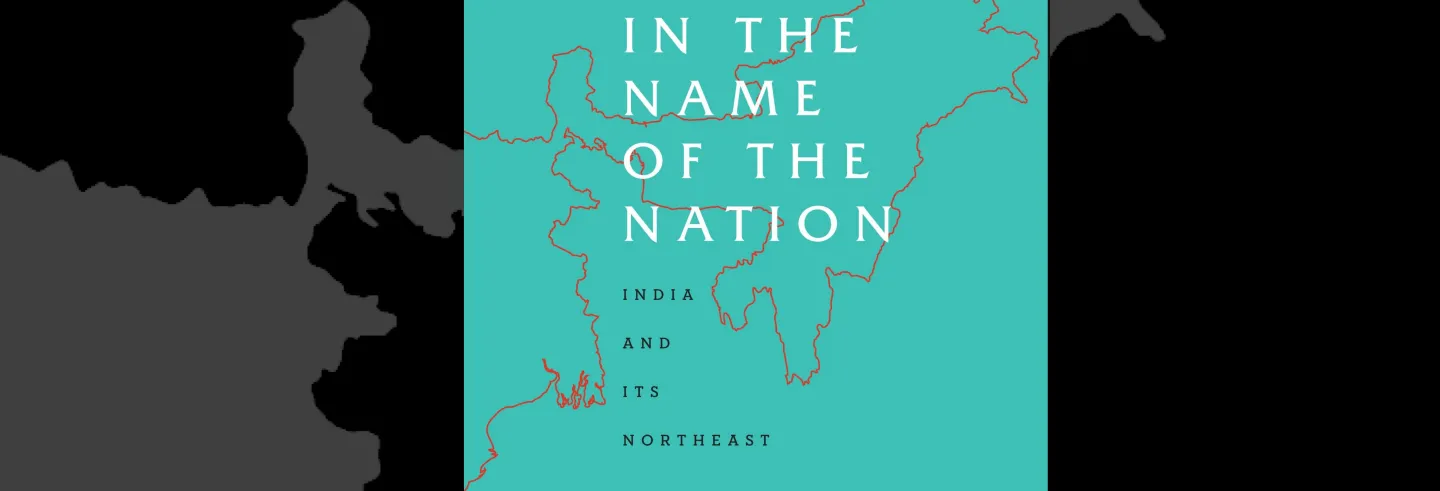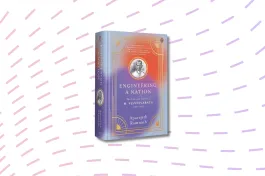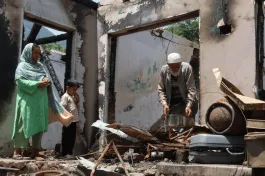Sanjib Baruah’s In the Name of the Nation: India and its Northeast is not simply another book about the Northeast. In these strange, unpredictable times it reads like a cautionary note to those who wish to steer the destiny of the country into the next quarter of the 21st century. It is both a detailed archive of past mistakes, as well as a register of repression of democratic politics in this difference-flattening region known as Northeast India. This is a reflective book, borne out of several decades of engagement with, pining for, and sometimes despairing of the place one calls home.
For all its erudite contents and analysis, Baruah has elevated a deeply personal exercise and forced his reader to draw parallels with everything that is happening in the liberal and illiberal spaces around south Asia. It is, therefore, no longer a book about Northeast India but one that speaks to a transnational neighbourhood that includes Bangladesh, Bhutan, China, Myanmar, and Nepal, and perhaps the region that extends beyond these countries. Most importantly, it speaks to the phenomenon of a muscular, uncaring, and militaristic policy that spread across the country with relative ease in less than a decade.
It comes at the back of several significant events in the history of modern India. The abrogation of Article 370 and with it any pretence of autonomy for Kashmir, the promulgation of the unpopular and diplomatically embarrassing Citizenship Amendment Act (CAA), the vilification of dissent and attacks on university students, and the government’s heavy handed and ill-thought out response to the Covid-19 induced pandemic in the country, have all been extraordinary events. They have made ordinary people, even those who might have been supportive of some aspect of the majoritarian political views of the government, wonder what indignities are still to come.
[E]very chapter points to wider events outside Northeast India in order to place before the reader puzzles and possibilities of what is happening around us.
Baruah’s book, therefore, can be read as a prescient ledger of how things came to pass in Northeast India. It underwrites the German philosopher Friedrich Nietzsche’s often repeated lines from the epigrams and entr’actes in Beyond Good and Evil: “Whoever fights with monsters should see to it that he does not become one himself. And when you stare a long time into an abyss the abyss stares back at you”.
Baruah begins by stating something that should have become obvious to most observers of Indian politics: India has no problems continuing with a counterinsurgency regime in Northeast India over several decades, despite the obvious colonial and expeditionary overtones of such a discourse. Over seven detailed chapters, Baruah tells his readers about a pacification process that began in the 19th century and was organised around inventing a frontier through immigration, labour, race, and the clubbing together of disparate places and peoples for administrative convenience. Each chapter begins with a carefully thought out epigraph, through which the author weaves together evidence for incredibly complex arguments. As they end, every chapter points to wider events outside Northeast India in order to place before the reader puzzles and possibilities of what is happening around us.
The first chapter places the Northeast India within a particular 20th century moment in South Asia that was a result of Viceroy Curzon’s imperial policy of creating buffers between the revenue earning heartland of British India and its presumably hostile competitors, Russia and China. This was a project where anthropologists and administrators played a particularly important role in subsequent portrayals of frontier regions as the savage peripheries of the nation, inhabited by natives who, in the eyes of the colonisers, were both lazy and wild. Hence, controlling such a frontier required colonial authorities to punish the population through legal and extra-legal coercion.
The social and political profiles of proponents and opponents of [the NRC and CAA] … have left national observers and activists confused about just what is happening in the region.
The partitioning of the British Empire in South Asia has cast a very long shadow on contemporary events in Assam. For those who have followed Baruah’s earlier work, the second chapter is a reminder about the vast differences of experiences of people living in the west and east of British India. He focuses on the plight of Hindu refugees of Partition who are able to blend into other parts of India, but not so into Assam for two significant reasons. First, the opposition to immigration in Assam that predates Partition in 1947. Second, for the peculiar case of Sylhet that merged with Pakistan after a referendum. The referendum left a large number of people feeling like foreigners at home. The contemporary residues of these dilemmas can be seen in the debates around the National Register of Citizens (NRC) and the CAA in Assam. The social and political profiles of proponents and opponents of the two have left national observers and activists confused about just what is happening in the region.
Some of the persistent conversation stoppers in the nation-wide activism around Assam’s anti-CAA protests have been the reference to cut-off-dates and conditions to who can be counted as citizens of India under several amendments to the Citizenship Act (in 1955 and 1986). Baruah patiently explains to the reader why the response from the Northeast has been informed by a different kind of Partition history and experience than the rest of the country is willing to engage with.
From their quarantine centres and villages, the returning migrants are asking questions of their local state government representatives about food producing and distribution networks that are no longer in local control.
The third chapter deals with another obstinate idea in any discourse on the region: development. The author organises his material from the transnational neighbourhood to show how development has been a pernicious political discourse for controlling a postcolonial resource frontier. There are two particularly important observations to draw from this chapter. The first is that proponents of this form of development that is dangerously close to Marx’s ideas of primitive accumulation, have a lot of disdain for the poor but always claim to speak on their behalf. The second observation is the idea of pristine homelands that allow for an elite to claim power, while many of the indigenous poor are forced to leave the land in search of low paying, precarious work. Hence, for Baruah the claim-making of sections of the indigenous people is part of a political process that pushes groups to make claims to land and resources before others do.
Baruah engages with the works of anthropologists Dolly Kikon and Bengt Karlsson (2019) to look at the “stretched life world” of Northeast migrants, to ask if any of these young people will ever come back to farming after working in the spas and restaurants in mainland India. This is especially pressing in light of the fact that since April 2020 most of the migrants have had to leave their jobs and return back home – in this case the Northeast – to the crumbling infrastructures, falling returns from agriculture and lack of employment opportunities that forced them out in the first place. From their quarantine centres and villages, the returning migrants are asking questions of their local state government representatives about food producing and distribution networks that are no longer in local control.
[G]iven the manner in which the liberal democratic project is unravelling across much of the world, it is hard to see how any of the current members of the UN and other rights enabling bodies can come to the defence of minority nationalities and indigenous peoples.
In discussing the Naga conflict, Baruah points out that at the time when A Z Phizo left for Britain to seek support for Naga independence the momentum of anti-colonial struggles was leading to countries declaring themselves independent at a remarkable frequency. Yet, borrowing Arjun Appadurai’s phrase, he says that the Naga movement “collided with the metrics of the possible” (124), where it was very difficult for the global network of states and the United Nations system to accept that a country like India that had made a successful transition to democracy from colonialism could actually be a coloniser itself. As he points out, the Indo-Naga talks seems to favour one party much more today. However, one is not sure if there is any serious, nuanced idea of how to take the talks to a meaningful conclusion, especially when the current government has declared its impatience with all forms of territorial autonomy with the abrogation of Article 370 in Jammu and Kashmir. On the other hand, this centralisation and obvious pandering to majoritarian opinion means that India no longer occupies the moral high ground it did when Naga leaders were making their case for independence. Given the manner in which the liberal democratic project is unravelling across much of the world, it is hard to see how any of the current members of the UN and other rights enabling bodies can come to the defence of minority nationalities and indigenous peoples.
[T]he counterinsurgency project has been temporarily successful in creating silos for people and their histories, where each community sees its political salvation in isolation from its neighbours.
Chapter 5 deals closely with insurgency and the pedagogy of state violence, while Chapter 6 looks at the Armed Forces (Special Powers) Act as an example of imperial policing and the continuance of colonial forms of sovereignty in the region. Both chapters trace the trajectory of the Indian state’s response to insurgency as illustrations of the arrogance of power and the establishment of a regime of structural violence to govern the region. The appropriation of local cultural icons to serve in the pacification of dissent, the openly disdainful and public interventions in civic affairs by unelected persons like governors, military generals, and bureaucrats, is no longer limited to the fringes of India. Yet, as Baruah reminds his readers the Northeast paid a particularly violent price for resisting these forms of governance. In a tragic sense, the lack of regional solidarity on such matters also shows how the counterinsurgency project has been temporarily successful in creating silos for people and their histories, where each community sees its political salvation in isolation from its neighbours.
The old questions of the 20th century remain salient even now, but it is still a difficult ask to come to terms with so much violence and loss.
In the Name of the Nation has been a difficult book to review. In part, this is because every chapter reminds me of three decades of struggle with ideas, events and consequences of the militarisation of the place that both Baruah and I call home. Also, I began reading it in earnest as the lockdowns came into effect. I had to deal with an atomised existence where one is left with memories, thoughts, and anxieties that were always under the surface in our pre-Covid-19 world. As we pick up the pieces after several decades of armed conflict, I realise that the dreams and visions of an earlier generation of dissenters and elders was not earth shattering, but one that reaffirmed the need for dignity and self-determination of small communities. The old questions of the 20th century remain salient even now, but it is still a difficult ask to come to terms with so much violence and loss. Hence, reading Baruah’s book was both a moment of reflection and a requiem for the past.
To take the edge off my pain, I watched Rajni Basumatary’s incredible Bodo film Jwlwi – The Seed that began doing the festival rounds in 2019. Without giving the story away, I found myself gasping for breath, when the characters in the film recounted the minutiae of torture in painful detail. I was reminded of staying up nights consoling my partner as she returned from Sonari in Assam, where the local football team was tortured to the man by the Indian army during Operation Rhino (1990), just because they had good physiques. Perforated eardrums, broken ribs and bodies in paddy fields were how many of us remembered the past. Basumatary captured it all on film and in a fictionalised story that could have been about any one of our friends. Her generous, gentle narration of the story made me realise that such pasts do not disappear. They spring up from the streams where we go fishing, the groves where we forage for bamboo shoot, and the hilltops where we go for picnics with friends. Like old Ahom coins buried in paddy fields, they are unearthed every time a caring person makes an effort to dig up the truth.
It would be wonderful to be a fly on the wall when Rajni Basumatary and Sanjib Baruah meet to exchange notes. Between the filmmaker and political scientist, we will have another Weberian moment, where despite the authoritarian milieu around us, we will still have books and films that remind us of the genius and generosity of the human spirit that thrives on resistance.
We can step back from Nietzsche’s abyss then.










